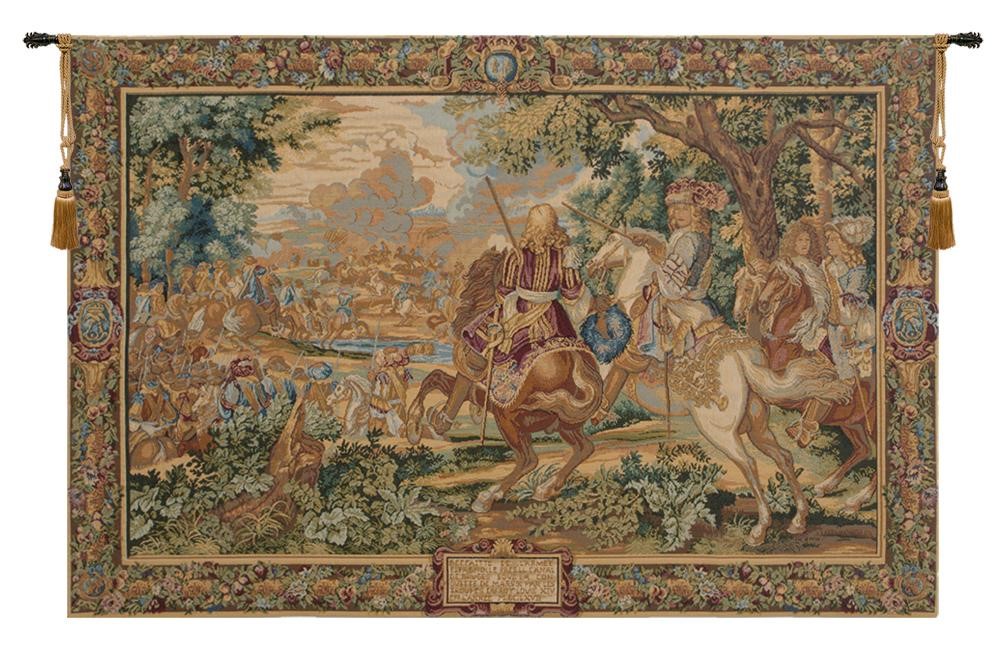
Renaissance Tapestries: A Journey Through Time and Artistry
From the 14th to the 17th century, the Renaissance era was a remarkable period in human history characterized by a resurgence of interest in arts, culture, and knowledge. The Renaissance tapestry was one of the most captivating forms of art that emerged during this time. These intricate and majestic textile creations not only adorned the walls of palaces and noble residences but also served as a testament to the craftsmanship and creativity of the era.
History of Renaissance Tapestries
In this blog, we delve into the fascinating history of Renaissance tapestries and uncover the meticulous process behind their creation.
Origins and Influence
The art of tapestry-making predates the Renaissance, but it reached its zenith during this period. Inspired by the flourishing art scene and cultural exchanges, tapestry production became a significant aspect of Renaissance art. Influenced by the Italian Renaissance, European courts across France, Flanders, and England sought to adorn their interiors with these luxurious textiles, which depicted various narratives, mythologies, and historical events.
Legacy and Appreciation
Renaissance tapestries represented more than just decorative objects; they symbolized wealth, power, and cultural sophistication. The intricate designs, technical mastery, and vibrant colors showcased the artistic achievements of the era. Today, these magnificent creations can be found in museums and art galleries worldwide, where they continue to captivate audiences with their beauty and historical significance.
Materials and Techniques
Renaissance tapestries were meticulously woven using wool, silk, and precious metal threads, such as gold and silver. Wool provided a sturdy and versatile base for the tapestry, while silk added luster and richness to the overall composition. The introduction of metallic threads elevated the opulence and splendor of these masterpieces.
Process of Creating a Renaissance Tapestry
The process of creating a Renaissance tapestry was an arduous one, often involving a team of highly skilled craftsmen. The design was first created by a painter or a cartoonist, who translated the desired subject onto a full-scale drawing known as a cartoon. This detailed cartoon served as the blueprint for the weavers and guided them throughout the weaving process.
Weaving and Looms
The actual weaving of a tapestry required immense skill, patience, and time. It was typically carried out on large vertical looms designed for tapestry production. These looms comprised a warp, which formed the vertical threads, and a weft, which comprised the horizontal threads woven through the warp.
Weavers worked from the back of the tapestry, facing the loom, and followed the cartoon behind the warp threads. Each weaver was responsible for a specific section, or “slab,” of the tapestry, which they meticulously wove using the desired colors and textures. As the work progressed, the tapestry was rolled onto a roller at the top of the loom, allowing the weavers to access the lower parts.
Incorporating Depth and Texture
One of the defining characteristics of Renaissance tapestries is their ability to create a sense of depth and three-dimensionality. Weavers achieved this effect using different weaving techniques, such as shading, hatching, and blending colors. By skillfully interlacing threads of varying thickness and tension, they added texture and volume to the figures, landscapes, and architectural elements depicted in the tapestry.
Finishing Touches
Once the weaving was complete, the tapestry underwent several finishing processes. These included trimming loose threads, reinforcing the edges, and sometimes applying a protective backing. The finished tapestry was then ready to be displayed and admired, becoming a focal point within palaces and noble residences.
Conclusion
Renaissance tapestries embody the artistic spirit and creative brilliance of the Renaissance period. Through their meticulous craftsmanship and intricate designs, these textiles offer a glimpse into the cultural and aesthetic sensibilities of the time. The art of tapestry-making during the Renaissance was an elaborate process, requiring skilled artisans and a profound appreciation for artistry. In the 18th and 19th centuries, the art of tapestry-making continued to thrive, with tapestries reflecting the evolving tastes and styles of the respective periods. As we marvel at these exquisite works today, we honor the enduring legacy of Renaissance tapestries and the remarkable artisans who brought them to life.

